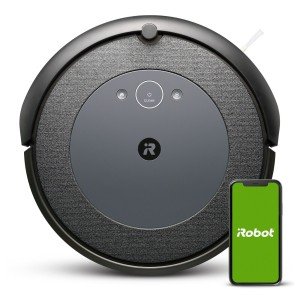The Rise of Robot Vacuum Cleaners in Industrial Settings
In recent years, the landscape of industrial cleaning has experienced a considerable transformation with the intro of robot vacuum. These automated devices are not just a novelty for homes; they have acquired traction in storage facilities, manufacturing plants, and other industrial environments. This article explores the functionality, benefits, and considerations of robot vacuum within the industrial context, while responding to some frequently asked questions.
What are Robot Vacuum Cleaners?
Robot vacuum cleaners are automated cleaning devices equipped with advanced sensors and technology that enable them to browse around areas, discover dirt, and vacuum surface areas without direct human intervention. In industrial settings, they are created to handle a variety of debris types, facilitate routine cleaning schedules, and improve general operational performance.
Table 1: Key Features of Industrial Robot Vacuum Cleaners
| Feature | Description |
|---|---|
| Navigation | Uses LiDAR or camera-based navigation for exact mapping. |
| Size and Design | Compact and robust design to suit tight areas and stand up to tough environments. |
| Self-Charging | Instantly returns to its docking station for recharging. |
| Dustbin Capacity | Bigger dustbin fit for industrial debris sizes and volumes. |
| Shows | Can be set for scheduling and specific cleaning jobs. |
| Information Collecting | Equipped with sensing units to collect data for upkeep and cleaning analysis. |
Benefits of Robot Vacuum Cleaners in Industrial Settings
The adoption of robot vacuum cleaners features a myriad of advantages:
Increased Efficiency:
- 24/7 Operation: Unlike human cleaners, robots can operate all the time, contributing to constant tidiness without downtime.
- Time-Saving: Automated cleaning enables workers to focus on core jobs instead of cleaning duties.
Expense Savings:
- Labor Costs: Maintaining a robot vacuum can minimize the requirement for a large cleaning personnel, lowering total labor costs.
- Functional Efficiency: With improved cleanliness and decreased downtime due to upkeep concerns, companies can minimize operational costs.
Boosted Safety:
- Reduced Risk: By decreasing the human participation in harmful cleaning environments, the danger of accidents is decreased.
- Constant Cleaning: Robot vacuums ensure that locations are consistently cleaned, lowering slip dangers and unhealthy environments.
Increased Flexibility:
- Customizable Cleaning Routes: These devices can be set to clean particular areas or floors, adjusting to changing industrial designs.
- Variety of Surfaces: Industrial robot vacuums can manage different flooring types, from concrete to tiles, making them versatile.
Ecological Impact:
- Sustainable Cleaning Solutions: Many designs utilize very little water and ecologically friendly cleaning solutions, helping in corporate sustainability efforts.
Table 2: Industrial Applications of Robot Vacuum Cleaners
| Industry | Application |
|---|---|
| Manufacturing | Cleaning production lines and assembly locations. |
| Warehousing | Keeping tidy and orderly storage spaces. |
| Food Processing | Ensuring cleanliness in delicate locations to satisfy hygiene requirements. |
| Pharmaceuticals | Keeping ultra-clean environments for production. |
| Logistics and Distribution | Keeping paths clear for efficient operation. |
Challenges and Considerations
While the advantages are substantial, services ought to also consider several challenges:
- Initial Investment: The upfront expenses of buying industrial robot vacuum cleaners can be considerable, though long-term cost savings might offset this expenditure.
- Maintenance and Repairs: Regular maintenance is essential to keep the robotic systems working optimally, and repair work can sustain additional expenses.
- Integration: Businesses might need to integrate these machines into existing workflows, which can need time and adjustment.
- Training and Support: Staff may need training to efficiently handle these makers, especially when repairing or shows is required.
Frequently Asked Questions About Robot Vacuum Cleaners in Industrial Settings
1. Just how much do industrial robot vacuum cost?
The cost can vary from a couple of thousand to tens of thousands of dollars, depending upon requirements, features, and brand.
2. What kinds of surfaces can they clean?
Robot vacuum appropriate for different surface areas including carpets, tiles, concrete, and even some wood floorings.
3. How do they browse complicated industrial environments?
A lot of industrial robot vacuums utilize innovative navigation systems like LiDAR, cameras, and sensors to draw up and adjust to their environments for effective cleaning.
4. Can they clean up large areas without human intervention?
Yes, industrial robot vacuums are created to tidy comprehensive areas with pre-programmed routes and schedules, successfully running autonomously.
5. Are these robots environmentally friendly?
Lots of designs prioritize performance and minimize water usage, making them a more environmentally friendly cleaning option compared to standard approaches.
The intro of robot vacuum cleaners into industrial environments symbolizes an exceptional advancement in cleaning innovation. With smart vacuum to enhance performance, lower labor costs, and keep security, these automated systems are leading the way for smarter and cleaner industrial operations. While difficulties might exist, the long-term advantages and technological improvements are encouraging for industries seeking to improve their cleaning protocols. As technology continues to develop, we can expect further innovations in robot vacuum that will transform industrial cleaning practices a lot more.

